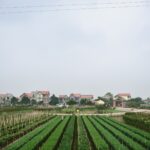Navigating 2025: Key Trends and Opportunities in Multifamily Housing


Photo by Elena Mozhvilo on Unsplash
Introduction: The Multifamily Housing Market in 2025
The multifamily housing sector enters 2025 with a mix of optimism and caution. Despite economic uncertainties and supply challenges, strong demand for rental units continues to drive growth. Elevated interest rates and high home prices have rendered homeownership unattainable for many, fueling a steady increase in renter households. This article examines the latest multifamily housing trends, design innovations, and actionable strategies for investors, developers, and renters seeking opportunities in this dynamic market.
Market Overview: Demand, Supply, and Rent Growth
Multifamily housing demand remains robust in 2025, supported by demographic shifts and a resilient labor market. Rental households are growing at double the rate of owner-occupied homes, highlighting a shift toward lifestyle renting and long-term rental preferences. [4] However, the sector faces headwinds from high construction activity, supply-chain issues, and elevated interest rates. According to Freddie Mac’s 2025 Multifamily Outlook, rent growth is projected at 2.2% for the year, below the 2000-2023 average of 2.8%. Vacancy rates are expected to rise to 6.2%, reflecting pressure from new unit absorption and increased supply. [1] On a national scale, effective rent growth climbed 1.7% over the last year, with rents remaining over 20% higher than pre-pandemic levels. [4]
The National Association of Home Builders (NAHB) predicts a decline in multifamily construction in the first half of 2025, followed by stabilization toward year-end as the market absorbs a substantial number of units still under construction. [5] Multifamily starts are expected to fall 11% this year, with a potential rebound in 2026. [5]
Regional Performance and Market Segmentation
Market performance varies considerably by region. Metro areas with limited new supply and modest rent increases since the pandemic are positioned to outperform, while high-supply markets may see weaker results. [2] The Sun Belt and Mountain West regions lead in new development, but also attract the strongest demand due to population growth and shifting preferences. [2]

Photo by Jakub Żerdzicki on Unsplash
If economic conditions deteriorate, vacancy rates could climb further, and rental growth may slow. Investors and developers should monitor local housing data and adjust strategies accordingly. For detailed market data, you can review the latest multifamily outlooks published by Freddie Mac and NAHB. [1] [5]
Design and Amenity Trends in Multifamily Developments
With renters expecting more from their living environments, multifamily properties are evolving to deliver enhanced amenities and innovative designs. In 2025, developers are focusing on wellness features, community integration, and smart value-engineering to balance luxury and cost. [3]
Emerging trends include:
- Wellness Circuits: Multifamily buildings incorporate curated wellness amenities, such as infrared saunas paired with cold immersion tanks, steam showers, and fitness circuits. These features promote holistic health and offer residents convenient access to physical and mental rejuvenation. [3]
- Community Connection: Developments increasingly connect residents to local businesses, parks, and events, fostering a sense of belonging and neighborhood engagement. [3]
- Smart Value-Engineering: As capital markets stabilize, value-driven design solutions are prioritized to ensure projects remain financially viable without sacrificing aesthetics or resident experience. [3]
- Lifestyle Amenities: Rooftop courts, mini-markets, spas, and communal workspaces are increasingly common, responding to resident desires for convenience and relaxation. [3]
To access these amenities, prospective renters should inquire directly with property management companies about available features and community programs. Developers seeking to implement such trends should consult design professionals and review successful case studies in comparable markets.
Actionable Strategies for Investors, Developers, and Renters
For Investors: Monitor market fundamentals and adjust property portfolios to focus on regions with strong demand and manageable supply pipelines. Consider value-add renovations and amenity upgrades to capture premium rents and maintain occupancy. Stay informed by regularly reviewing reports from Freddie Mac, NAHB, and local real estate associations. [1] [5]
For Developers: Focus on smart design, wellness integration, and cost-effective construction practices. Anticipate evolving renter preferences and proactively incorporate amenities that support lifestyle needs. To navigate supply-chain challenges, build relationships with reliable suppliers and adopt flexible project timelines. [5]
For Renters: Take advantage of increased supply and competitive rental rates by comparing options across emerging neighborhoods and newly delivered properties. If seeking specific amenities or wellness features, directly contact leasing offices for details. For affordable housing opportunities, search for local government programs and housing agencies; use official sources such as your city’s Housing Authority website or search terms like “multifamily affordable housing programs [your city].”
Challenges and Alternative Approaches
The multifamily sector faces several challenges in 2025, including elevated construction costs, interest rate volatility, and supply-chain disruptions. Developers may experience delays in project delivery, while investors could see fluctuations in property values and returns. [2] [5]
To mitigate risks:
- Adopt flexible acquisition and development strategies that allow for adjustment as market conditions shift.
- Engage in frequent market analysis using verified, up-to-date reports from credible industry organizations.
- Explore alternative financing options with established lenders; for guidance, consult your financial advisor or local bank’s commercial real estate department.
- Consider mixed-use developments or adaptive reuse projects to diversify investment and appeal to broader market segments.
Implementation Guidance: How to Access Opportunities
Investors/Developers: To stay ahead, sign up for industry newsletters and attend regional real estate conferences to network and identify growth markets. Review quarterly reports from Freddie Mac and NAHB for the latest data, and consult local real estate boards for insights on zoning, permitting, and incentives. [1] [5]
Renters: To find new multifamily units, search property management websites, major rental platforms, and local housing agencies. For affordable housing or subsidized options, search for official programs using terms like “affordable multifamily housing [your location]” and contact your city’s Housing Authority for application steps and eligibility requirements.
Conclusion: Key Takeaways for 2025
The multifamily housing market in 2025 continues to evolve, driven by strong demand, innovative design, and shifting economic conditions. By staying informed, engaging with reputable sources, and proactively seeking opportunities, investors, developers, and renters can navigate challenges and capitalize on emerging trends. Whether searching for a new home or planning a development, leverage verified resources, consult industry experts, and monitor market data to make informed decisions in this vibrant sector.
References
- [1] Freddie Mac (2025). 2025 Multifamily Outlook. Market fundamentals and forecasts.
- [2] Freddie Mac (2025). Multifamily Market Trends. Rent growth and vacancy rates.
- [3] Multifamily Executive (2025). 10 Multifamily Design Trends That Will Define 2025.
- [4] Arbor Realty Trust (2025). U.S. Multifamily Market Snapshot, May 2025.
- [5] NAHB (2025). Multifamily Market to Stabilize Toward the End of 2025.






